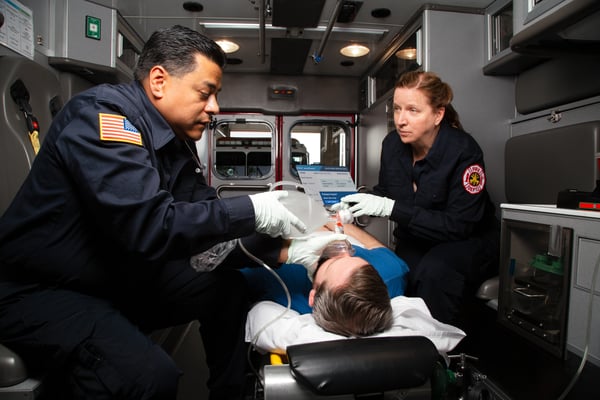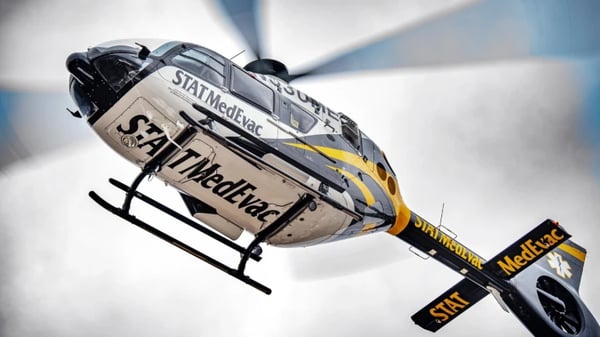News Alert: New ePCR Integration Simplifies EMS Data Management and Enables Better Care Coordination
Complete Patient Documentation Earns More Revenue and Mitigates Liability Risk
(3 min read) During the 2021 ZOLL Summit Series ePCR & Fire event, quality assurance analyst and clinical educator, Jason Haag, spoke about how proper documentation related to the patient’s condition, care, and services provided during an ambulance call and transport ensures protection from liability and accurate reimbursement rates
Was this information valuable?

(3 min read) During the 2021 ZOLL Summit Series ePCR & Fire event, quality assurance analyst and clinical educator, Jason Haag, spoke about how proper documentation related to the patient’s condition, care, and services provided during an ambulance call and transport ensures protection from liability and accurate reimbursement rates. Haag explained that there are four components to an Emergency Medical Services (EMS) dispatch that require proper documentation, and each step justifies the next:
- The initial call
- EMS response
- Medical assessments
- Supplemental documentation
The Initial Call
A patient care report (PCR) tells the whole story of the patient encounter, and the story begins with the chief complaint taken during the initial 911 call. It’s essential to document something more specific than “none” or “for transport,” as the information taken during this call determines and justifies the level of response. For example, an unresponsive patient’s chief complaint is their condition — unresponsive. A diabetic patient can have a chief complaint of altered mental status, or hypoglycemia if they or someone else measured their blood glucose (BG) levels prior to EMS arrival. The chief complaint informs how dispatch responds.

EMS Response
The level of response affects billing — either Basic Life Support (BLS), Advanced Life Support (ALS) 1 or ALS 2. If the call taker believes the chief complaint justifies an ALS level response at the time of dispatch was such that only an ALS provider was qualified to perform the assessment, then reimbursement will reflect services rendered. Even if an ALS-certified clinician made it to the scene and determined an ALS-level response was unnecessary, with proper documentation, the EMS agency will still receive reimbursement for ALS services rendered.
Medical Assessment
A medical assessment of the patient will justify any interventions made at the scene. Documented interventions tell the story of what was done for the patient during this call. Complete, accurate documentation will help billing departments code the interventions properly for optimum reimbursement. Each intervention gets its own line on the chart. For example, as a provider, are you giving Morphine and Zofran at the same time? It’s unlikely – in which case, they both need to be documented on separate lines. The way a document is formatted tells a story just as much as the content within the document.
Supplemental Documentation
Supplemental documentation includes adding a social security number, updated insurance information, and the patient’s home address for billing correspondence. These data elements affect reimbursement rates and insurance discovery for the patient who might otherwise be miscategorized as self-pay. One important consideration for supplemental documentation is the billing signature. A patient needs to be over 18 years of age and deemed competent in order to sign for themselves. Clinicians use professional judgment to determine whether the patient is competent. Thorough documentation will protect the clinician if there are any disputes as to the patient’s competency at the time of signing.
If the patient is under 18 years of age, the line of succession for signatures is as follows: parents/legal guardians, relatives/friends, or representatives of an institution providing care or support. As a last resort, the medic can sign for the patient, but only if:
- Beneficiary is unable or unavailable to sign
- No other people can sign on their behalf
- Circumstances are fully documented
During an emergency medical situation, many quick decisions are made. Documentation is required, not only to tell the story of what happened, but to describe why certain decisions were made. This thorough approach to documentation justifies reimbursement levels, as well as provides context for any disputes that might occur, thus adding an important layer of risk protection for the agency and individual care provider.
Read More on Documentation Best Practices for Risk Mitigation
Lessons Learned from EMS Documentation Case Studies
Want to Receive the ZOLL Pulse Blog in Your Inbox? Subscribe.
Related Posts
How STAT MedEvac Connected Device, Software, and Data Technology To Enhance QA and Elevate Care
Podcast: 4 Ways ePCR Software Can Relieve EMS’ Biggest Headaches
ZOLL Pulse Blog
Subscribe to our blog and receive quality content that makes your job as an EMS & fire, hospital, or AR professional easier.
ZOLL Pulse Blog
Subscribe to our blog and receive quality content that makes your job as an EMS, fire, hospital, or AR professional easier.




